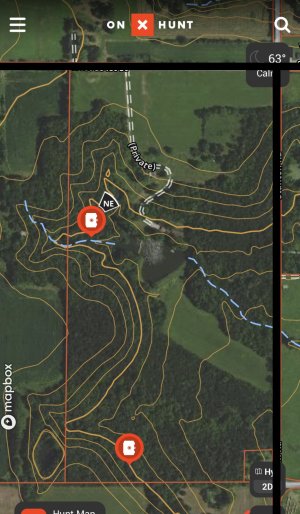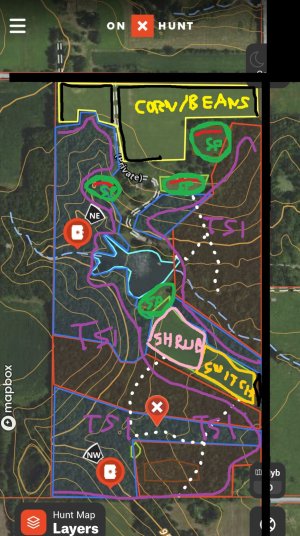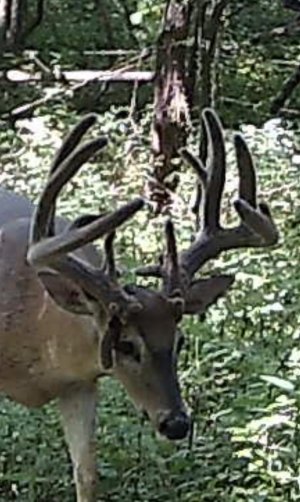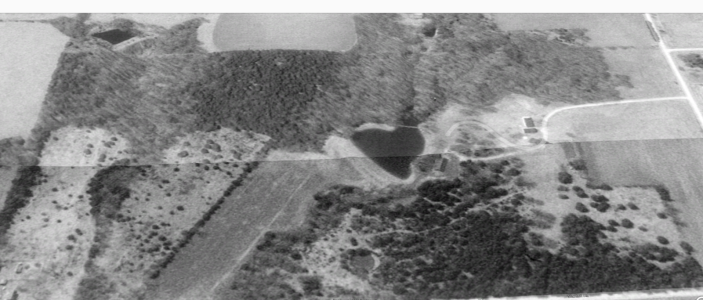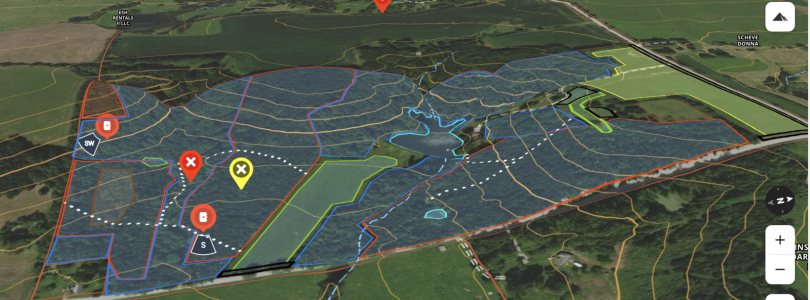Oleo
A good 3 year old buck
I recently bought some land in eastern KS. I have a mix of hardwoods, eastern red cedars, and fescue/brome grass.
There are some nice deer around, but it feels like I have a lot of pass-through areas rather than good feeding or bedding habitat.
I plan to thin out some cedars to create some bedding areas and I probably need to do some TSI to get some more ground cover in the hardwoods, but I haven’t decided what to do with the grass areas.
I think I’m going to put alfalfa in the 4 acres below the pond dam because I have a farmer that’ll help with that, and there’s very little alfalfa around (just ag and hay). That’ll get me a little food other than acorns. With the other 10 acres of grass up top, would you put it into ag rotation, more alfalfa, or something like switchgrass for cover?
Pictures for reference.
Red=eastern red cedar
Blue=hardwoods
Light Blue=Pond
Big Green Area=grass planned for alfalfa
Little Green Area=food plot? Bedding?
Yellow=area in question
Other context - I have hay fields to the south and ag fields to the west and north. I have the most timber in the immediate area.
Is my best bet to create the bedding and cover in the timber areas and use the current grass areas for food? Or should I try to get some more cover in the grassy areas?
I’m new to habitat management, so any suggestions are welcome.
Thanks!
There are some nice deer around, but it feels like I have a lot of pass-through areas rather than good feeding or bedding habitat.
I plan to thin out some cedars to create some bedding areas and I probably need to do some TSI to get some more ground cover in the hardwoods, but I haven’t decided what to do with the grass areas.
I think I’m going to put alfalfa in the 4 acres below the pond dam because I have a farmer that’ll help with that, and there’s very little alfalfa around (just ag and hay). That’ll get me a little food other than acorns. With the other 10 acres of grass up top, would you put it into ag rotation, more alfalfa, or something like switchgrass for cover?
Pictures for reference.
Red=eastern red cedar
Blue=hardwoods
Light Blue=Pond
Big Green Area=grass planned for alfalfa
Little Green Area=food plot? Bedding?
Yellow=area in question
Other context - I have hay fields to the south and ag fields to the west and north. I have the most timber in the immediate area.
Is my best bet to create the bedding and cover in the timber areas and use the current grass areas for food? Or should I try to get some more cover in the grassy areas?
I’m new to habitat management, so any suggestions are welcome.
Thanks!

